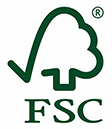Countertops
Laminate
Avoid laminate countertops, which may include formaldehyde in the composite wood base or in the glue laminating process. Some laminates now on the market are certified as low-emitting and contain recycled materials, but they are not very durable. Paper composite countertops made of recycled fibers are more durable than laminates, but some may still contain phenol-formaldehyde glues or trace amounts of formaldehyde.
Salvaged Stone or Wood
If available, salvaged stone—like granite or slate—and salvaged wood are the most sustainable low-emitting materials. You may be able to find remnants of stone slabs at a considerable discount, which can be cut and finished to fit your kitchen. Check with local installers to see if they have leftovers, or visit a salvage company.
Salvaged or reclaimed wood is a good choice for a natural countertop, except for wet areas around the sink. Use natural oils to protect the wood and prevent drying. If you purchase new, untreated hardwood for counters or butcher blocks, make sure it is FSC certified.
If you choose stone that is not salvaged, check with the manufacturer about what sealants were used. Stone is durable, but has high environmental impacts. Choose a type of stone that is quarried locally, if possible.
Concrete
Concrete countertops are another good option. They do not off-gas harmful chemicals and are less expensive than stone countertops. These countertops are extremely durable, and can be sanded and resealed if they are damaged. Opt for locally sourced aggregate used in the cement mixture, if possible.
Stainless Steel
Stainless steel countertops are durable, easy to clean and don’t emit VOCs. Choose materials with high recycled content to minimize environmental impacts. Although the material is energy-intensive to produce, it can be recycled again. You may also be able to find salvaged metal counters.
Recycled Glass
Recycled glass, or terrazzo set in cement, is another option. Avoid terrazzo set with epoxy, which is derived from petroleum and can contain phthalates.

